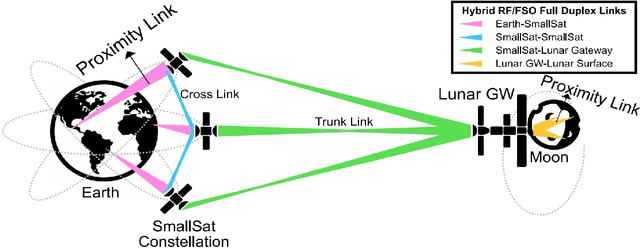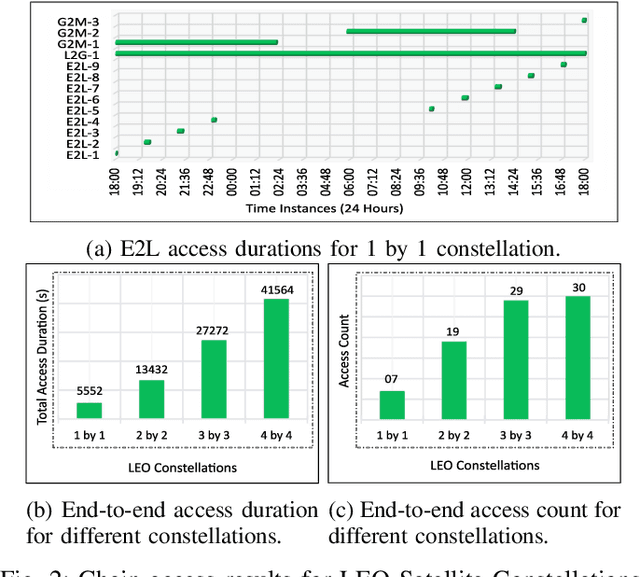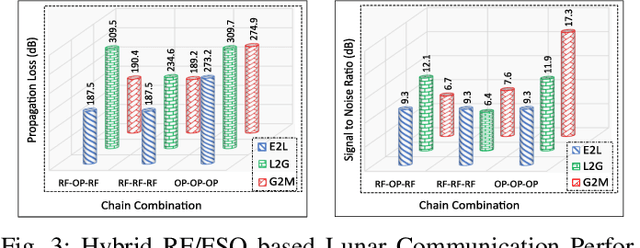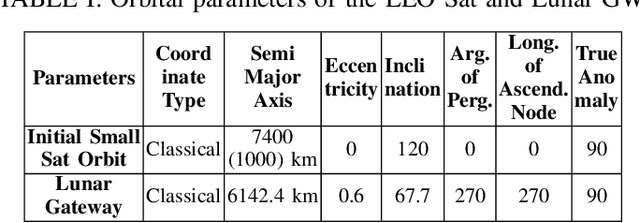Ethan Abele
Comparison of Experimental and Theoretical Mechanical Jitter in a THz Communication Link
Mar 05, 2025Abstract:The effect of mechanical vibration (jitter) is an increasingly important parameter for next-generation, long-distance wireless communication links and the channel models used for their engineering. Existing investigations of jitter effects on the terahertz (THz) backhaul channel are theoretical and derived primarily from free space optical models. These lack an empirical and validated treatment of the true statistical nature of antenna motion. We present novel experimental data which reveals that the statistical nature of mechanical jitter in 6G links is more complex than previously assumed. An unexpected multimodal distribution is discovered, which cannot be fit with the commonly cited model. These results compel the refinement of THz channel models under jitter and the resulting system performance metrics.
Free-Space Optical Channel Turbulence Prediction: A Machine Learning Approach
May 27, 2024



Abstract:Channel turbulence presents a formidable obstacle for free-space optical (FSO) communication. Anticipation of turbulence levels is highly important for mitigating disruptions. We study the application of machine learning (ML) to FSO data streams to rapidly predict channel turbulence levels with no additional sensing hardware. An optical bit stream was transmitted through a controlled channel in the lab under six distinct turbulence levels, and the efficacy of using ML to classify turbulence levels was examined. ML-based turbulence level classification was found to be >98% accurate with multiple ML training parameters, but highly dependent upon the timescale of changes between turbulence levels.
Towards a Hybrid RF/Optical Lunar Communication System (LunarComm)
Mar 29, 2022



Abstract:The prospect of mankind returning to the Moon has garnered a great amount of attention in recent years. Dozens of lunar missions are planned for the coming decade which will require the development of a sustainable communication infrastructure with high data rates and minimal latency. Space communication systems thus far have relied on Radio Frequency (RF) links alone, but recent developments in laser communications have demonstrated that Free Space Optical (FSO) links can achieve much higher data rates. Upon considering the respective benefits and drawbacks of RF and FSO links, we make a case for the integration of these two technologies into a hybrid RF/FSO lunar communications architecture which leverages small satellites in a Low Earth Orbit (LEO) constellation. We include a case study for this technology designed in Analytical Graphics Systems Tool Kit (STK) software. Results are presented in terms of chain access duration, propagation delay, transmission loss, Signal-to-Noise Ratio (SNR), and Bit Error Rate (BER). This architecture shows potential to revolutionize extraterrestrial communications and pave the way for highly ambitious future missions in space.
 Add to Chrome
Add to Chrome Add to Firefox
Add to Firefox Add to Edge
Add to Edge